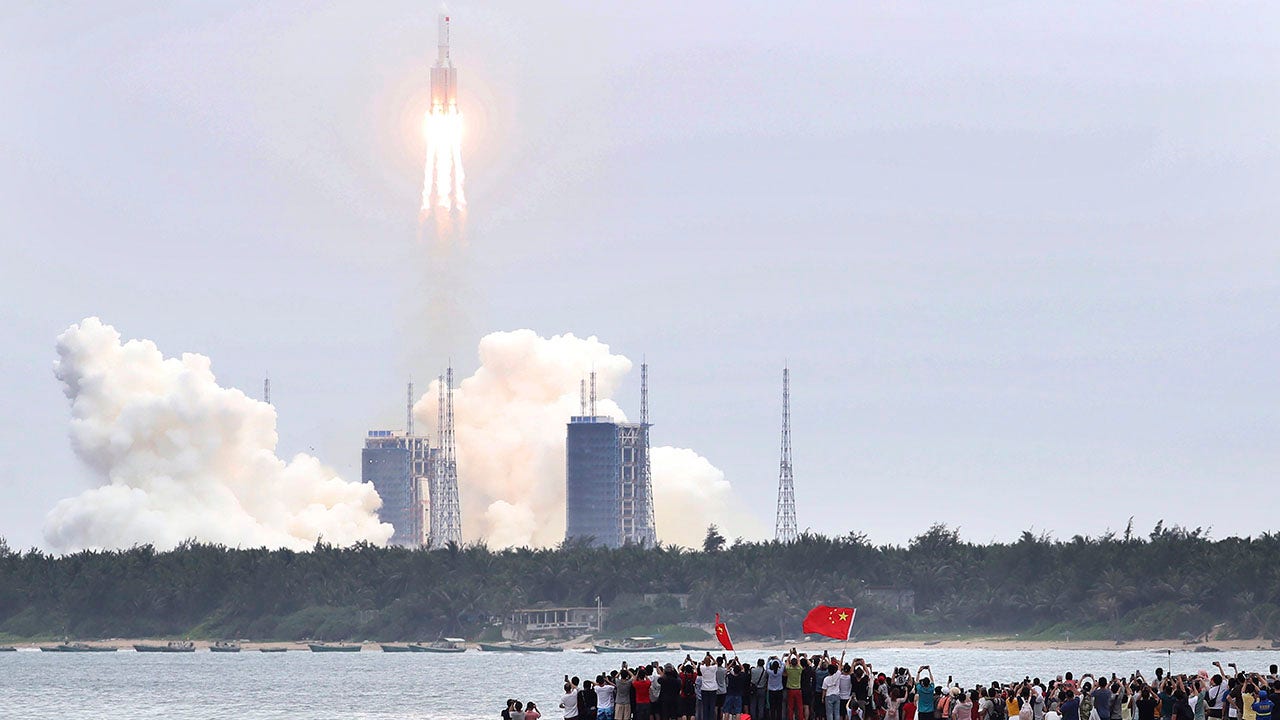What happens when space debris crashes on Earth?

China’s Long March 5B rocket’s core stage is set to make an uncontrolled reentry into Earth’s atmosphere in the next few days.
The 100-foot-long object is orbiting the blue marble every 90 minutes, passing north of New York and Beijing and as far south as Chile and New Zealand.
CHINESE ROCKET TO MAKE UNCONTROLLED REENTRY; UNCLEAR WHERE DEBRIS WILL HIT: REPORT
While the main stage released the Tianhe, or “Heavenly Harmony,” module – the makings of the country’s first permanent space station – shortly after the eight-minute mark of the mission, Gizmodo reported that the core stage stayed in space and did not perform a controlled deorbit.
Although rocket manufacturers typically take precautionary measures to avoid falling rocket debris, Inverse says the Long March 5B rocket stage is built without a steering booster, stabilization system and restartable engine.
Space debris hurtling back toward Earth is a fairly common occurrence.
In this Saturday, April 24, 2021, photo made available by NASA, the SpaceX Crew Dragon capsule approaches the International Space Station for docking. SpaceX’s four astronauts had barely settled into orbit on Friday, April 23, when they were ordered back into their spacesuits because of a potential collision with orbiting junk. It turns out there was no threat, the U.S. Space Command acknowledged Monday, April 26. The error is under review. (NASA via AP)
The SpaceX Crew Dragon capsule had a close encounter with some orbiting junk last month, though it turned out there was no real threat.
The National Oceanic and Atmospheric Administration’s (NOAA) National Environmental Satellite, Data and Information Service (NESDIS) says that, on average, between 200 and 400 tracked objects enter Earth’s atmosphere annually.
Most pieces of space debris – continuously amassing since the satellite Sputnik 1 escaped Earth’s gravitational pull on Oct. 4, 1957 – burn up in the Earth’s atmosphere on their descent.
CHINESE ROCKET DEBRIS TO MAKE AN UNCONTROLLED REENTRY: WHAT HAPPENED THE LAST TIME
Of the millions of pieces of space debris estimated to be orbiting the planet, roughly 30,000 are larger than a softball and only around 1,000 are actual spacecraft, NESDIS reports.
The objects are monitored by the U.S. military’s Space Surveillance Network (SSN) and NASA’s Orbital Debris Program Office using radar, telescopes and other space-based systems.
Even the smallest debris orbits at a high velocity, which can also be harmful to satellites.
National Geographic reports that most space junk is in lower Earth orbit, around 1,250 miles above the planet’s surface.
Space.com says that how long a piece of space debris takes to fall back to Earth depends on its altitude and that debris left in orbits below 370 miles normally fall back to Earth within a period of several years.
Components that survive the fall are likely to hit bodies of water, as Earth’s oceans cover 70% of the planet’s surface.
CLICK HERE TO GET THE FOX NEWS APP
Data recorded over a period of more than 50 years shows an average of one piece of debris fell back to Earth each day, though there have been no confirmed deaths or serious injuries from people being hit by space debris.
However, space debris can, of course, cause some damage depending on where it lands.
In 1979, NASA’s almost 100-ton Skylab fell on a small Australian town, the Soviet Union’s 43-ton Salyut-7 space station landed in Argentina in 1991 and in May of last year another China Long March 5B rocket released debris over Africa’s Ivory Coast after spending a week in low Earth orbit.




